|
In this Issue...
- From the Editor-in-Chief of the IBNS Newsletter
- Message from Dr. Jared Young, President, IBNS
- Teaching in a Virtual World
- Hobby Much - A Dungeon Master's Guide to Passing Time
- Good News - Feeding our Bodies and our Souls with the Science of Baking during Quarantine
- Trends in Neuroscience - B. Bardsley
Back to Top
From the Editor-in-Chief of the IBNS Newsletter:
I hope that you are all well and staying safe during this most unusual of times. As many of us work under various levels of quarantine, often working from home in near isolation, it is important that we stay connected with each other – stay connected as a learning community and a community of scholars. In hopes that the IBNS Newsletter can help facilitate our members’ social networking, we are asking members for their contributions in some specific areas:
Good News - members share surprising positive experiences they have had as a consequence of the quarantines. If possible, please share some of your experiences with quotes or photographs as well.
Spotlight Profiles – we will be using IBNS member profiles to facilitate communication and connectedness. So, please update your profiles – you never know whom we will choose to highlight!
Teaching in the Virtual World – we would like those of you now teaching online to share some of your experiences - the good, the bad, and the humorous – to help everyone with adjusting and excelling in our new online teaching world.
Hobby Much – hobbies can be a lifesaver when dealing with a quarantine – please consider sharing how you’ve used your hobbies to help cope.
The Home Research Kit – although many types of basic research cannot be maintained during the quarantine, some are still possible – modeling, meta-analyses, etc. Please consider a submission on how you are continuing to purse intellectual activity – maybe new ideas or analyses, or maybe just creating better illustrations or rethinking the conclusions from your last study. Whether you are doing to move your research efforts forward, please consider sharing with the rest of the community
Helping Hands - stories of how science, scientists, researchers and other are pitching in to help others during the pandemic. For example, two of my colleagues from Drexel University, Dr. Amy Throckmorton and Dr. Michelle Marcolongo, are using 3-D printers to assemble face shields for local medical centers, first responders, etc. Many of our members are probably similarly involved – we would love to hear your story!
The Virtual Mentor: These are difficult times for graduate students and post-doctoral fellows ,as well as faculty beginning their careers. Any advice and suggestions from our more established members could be very helpful and I am certain would be much appreciated.
And finally,
Call for Guest Editors: We need Guest Editors for June 2020, through the rest of the year. Guest Editors help to collect and edit materials for the Newsletter and often contribute their own good news, research advice and/or hobbies. Each Guest Editor will be profiled in the Newsletter they edit, so please consider being a Guest Editor for the IBNS Newsletter
Don McEachron
Back to Top
Message from Dr. Jared Young, President, IBNS
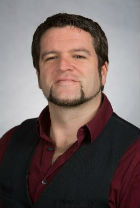
Dr. Jared Young
University of California at San Diego
San Diego, CA, USA
IBNS 2020 may have been cancelled, but we still want to see your research. We know of the disappointment at not getting to present your research to our Society and receive the feedback and networking you deserve! Therefore, we at IBNS are pleased to announce the creation of a subcommittee pledged to creating a mechanism wherein you can present your submitted abstracts to all members for feedback and discussion. Heading this subcommittee is Dr. Julianne Jett, with help from Past Presidents Scott Hall and Steve Kent, as well as major contributors from the Program, Education & Training, Ethics & Diversity, and Membership & Communications committees in Fair Vassoler, Jill McGaughy, Gregory Carr, Daphne Ling, Donald McEachron, Elizabeth Byrnes, Sarah Baracz, Marianne Van Wagner, and myself. Get your posters ready, be prepared to take people through them, and interact with your fellow IBNS scientists in early June! There may even be a social event after, in lieu of our usual banquet. We hope you are keeping well, and you find this opportunity a valuable goal, certainly we look forward to seeing you!
Back to Top
Teaching in a Virtual World
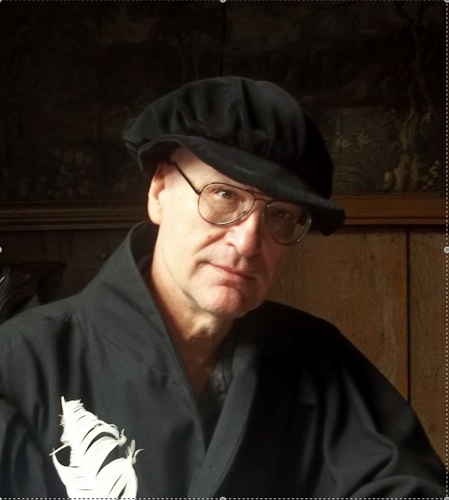
Thoughts from Dr. D.L. McEachron
Teaching Professor
Coordinator, Academic Assessment and Quality Improvement
School of Biomedical Engineering, Science and Health Systems
Drexel University, 3141 Chestnut Street, Bossone 719
Philadelphia, PA 19104
Tel: 215.895.1382 | Fax: 215.895.4983
My transition from face-to-face to remote instruction was somewhat less arduous than it was for some of my colleagues. I had been using an electronic Learning Management Systems or LMS (in my case, Blackboard) for many years and gradually had transferred almost all my activities to the electronic world. PowerPoint lectures, assignments, weekly quizzes, discussions and other activities were all managed through Blackboard and with the exceptions of the final examinations and actual classes, everything was already set up to be posted, submitted, graded and generally run through the course site. However, those exceptions are proving to be both a challenge and an opportunity.
To be clear, I am not engaged in online teaching per se but rather remote instruction. There is a difference, with true online instruction requiring considerably more instructional and course design than my two weeks of warning permitted. What I am doing in running synchronous classes via Zoom. And that has proved to be an adventure for both my students and myself.
Rather than outline all of the issues I have encountered, let me just highlight a few things I have learned to date. When running PowerPoint and sharing the screen with Zoom, it proved to be difficult to keep track of the other functions available in Zoom. My whole screen would be taken up with the slides. I learned to open up the PowerPoint but leave it in editing mode – I could then move through the slides while retaining enough screen space for both the ‘chat’ and ‘participants’ functionalities. The students would tell me if, when I began screen share, there were any issues with being able to see the slides. Incidentally, when initiating screen share, many of the available Zoom controls are subsumed under the instruction ‘More’, including the ‘record’ and ‘chat’ functions. This can be frustrating if you do not know what has happened. These days, I open my Zoom space 10 minutes before the scheduled times, open the slides and then click on both ‘participants’ and ‘chat’ and set the windows up for each function beside the slides. I then begin recording the class one minute before the schooled class time so that I am ready for the class when all the students sign in. My students have proven quite diligent about reminding me to record the class when I have failed to do so.
Zoom has many interesting features that I am slowly learning to use. One of these is the ‘annotate’ function, which allows you to draw on whatever you are sharing. It took awhile for me to recognize that you needed to clear any drawings when moving from the slide upon which I was drawing to the next (the drawings are separate from the actual slides and thus stay in place once created). Drawings thus had this nasty habit of interfering with the subsequent slides until I learned to erase each set after finishing with that specific slide. Even better was the discovery of a clear function that erases all the drawings at once so individual annotations need not be erased one at a time.
As with anything in life, remote teaching has advantages as well as disadvantages and the trick is, as always, to maximize the advantages and minimize the disadvantages as much as possible. My students are invaluable in helping with this process and I am very grateful to them for their patience and understanding as I struggle through my own learning process.
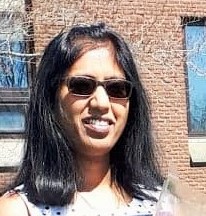 Thoughts from Dr. O Chandani Dinesh, PhD Thoughts from Dr. O Chandani Dinesh, PhD
Per-Course Instructor, Nutritional Biochemistry
Memorial University of Newfoundland, CA
Postdoctoral Researcher, Psychology & Neuroscience
Memorial University of Newfoundland, Canada
The transition from the classroom teaching to Virtual Teaching was challenging at the beginning for both instructors and students, mainly it was unexpected, and the gap between decision and action was only a few days difference. There were a few options that we could follow as instructors such as recording all remaining course materials as a few PowerPoint video files and upload those into the virtual website so that students can listen to those any time. However, I took a different path; I did not want students to feel left alone. Instead of recording all lectures to a few. I did 50 minutes of talks as they’re supposed to be with the regular classrooms. I believe students liked this way as they can expect and complete studying the previous lecture until the next talk. I was pleased that students ask questions related to examinations via e-mail.
Many of the questions arise not with lectures, but with online exams. They are all “open-book” examinations. However, I restrict the time, and I did not allow students to move previous pages once they hit next. That was a bit hard on students as they mentioned it was hard to spend more time on some questions when needed without knowing how hard the items on the next page.
Students emailed me that they are stressed the whole time during the exam, and one of the students called this a “Foreign experience.”
Student: “Sorry about the misunderstanding about the mock quiz, and I hope these emails aren’t coming off as trying to hate on you or anything. I just thought it was important to send an email about feedback since you were not able to see us take the exam in class or have a class to take a poll/to ask questions about the exam. Since everything is online, this was my only way of trying to provide feedback for the next exam”.
However, I altered this in my second exam as I have decided to give two Quizzes instead of one Final Exam. The decision to give two exams instead of one final exam during “LockDown” was wise. Still, the “timing” was an issue as I cannot provide a lot of time because I wanted the students to depend less on lecture materials via “Open-Book.”
I also had Multiple Choice Questions (MCQs) and a few Short Answer Questions. Theycan only benefit the “Open-Book” Exam for MCQs. I based the Short Answer Questions on my explanations during the lectures. So, students must listen to my recordings and get notes to answer the Short Answer Questions.
All of those, I like that students emailed me about their stress, and finally, a few students did email me the “Feedback.” as follows:
Student: “I’d like to say thank you for being very open to communication, thank you for continually asking us to come forward with concerns and feedback, and thank you for the smooth transition to an online class. I am always a little apprehensive about courses with multiple profs, but this one flowed very well the whole way through, and even with all the craziness of the year, I truly enjoyed it. I never felt left in the dark about what was going to happen, and I also much appreciated breaking the final exam into two quizzes, which made things much more manageable with so much else going on. I think my mother may have learned as much as me about vitamins and minerals from how much I talked about them after watching the lectures. “
I hope this information is helpful for others who are expecting to do Virtual Teaching in the future. I also like to know the experience of others as well.
Back to Top
Hobby Much - A Dungeon Master’s Guide To Passing Time
 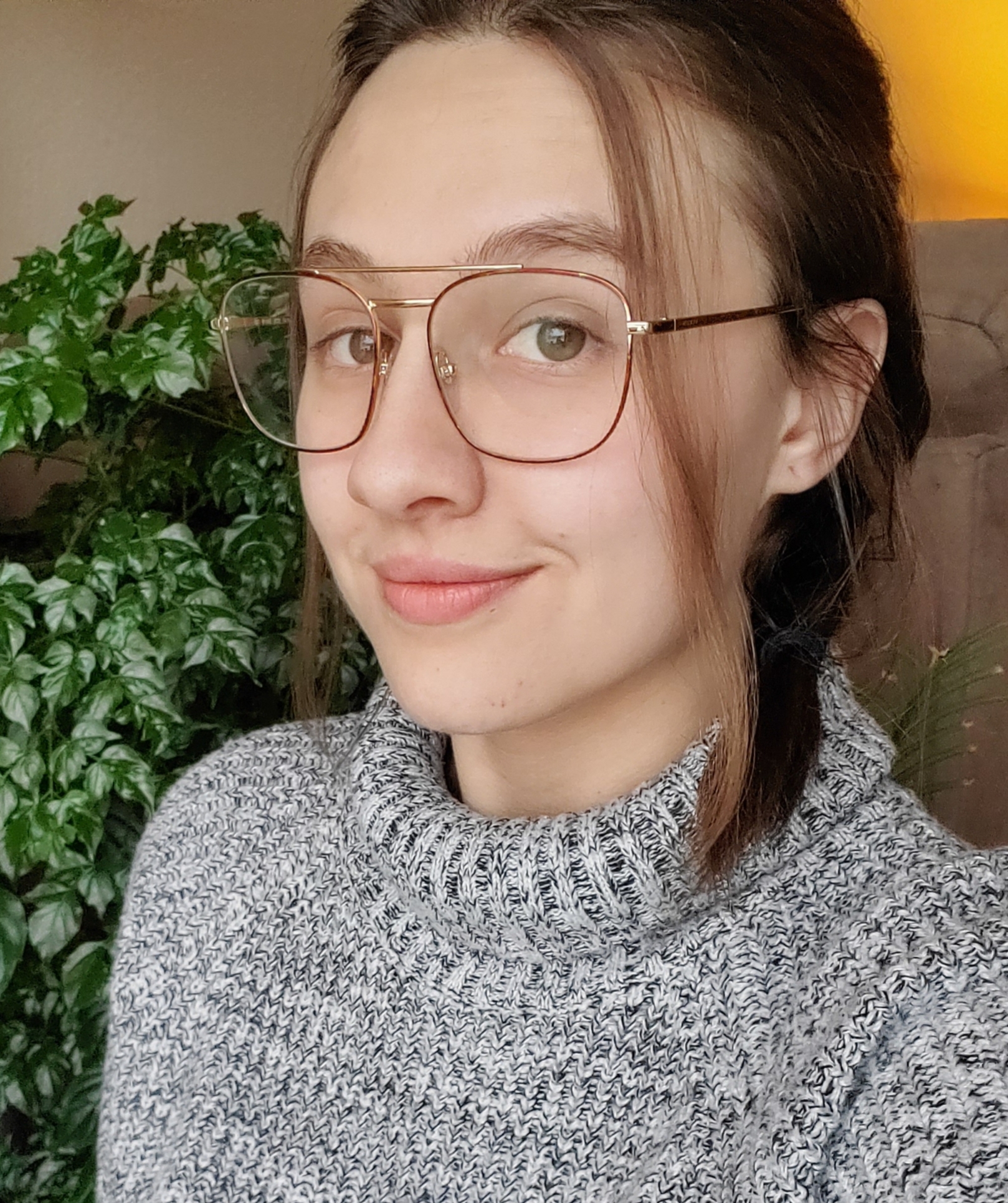
Photo by Don McEachron
Brighid Erika Bardsley is a recent graduate of the University of Colorado, Boulder’s undergraduate neuroscience program. Beginning her research career with neofascism cataloguing and cross-race facial recognition at CU, she currently works as a research coordinator focusing on early childhood language development. She intends to continue her research in cross-race social deficits and neofascism with graduate school in the future.
Here in Colorful Colorado the weather changes faster than a titration, and between the mile-high snowfalls and frigid winds I prefer to find myself an indoor setting. Unfortunately, this mild-tempered preference does nothing to quench my thirst for adventure (boredom). Dungeons and Dragons, however, has been satisfying the curiosities of my fellow recluses long before my time and is what fills my weekends.
Though I joke about my self-imposed solitary confinement, I can confidently say the comradely I’ve found within my adventures is my favorite part of DnD. The old friends I started playing with have aged into family, and every year new players join us to the same conclusion. Whether as a writer or as a player, riddles seem to bring people together – probably in frustration.
We as scientists put our all into our work, but passion alone isn’t enough to pay the emotional bill. We all come home eventually to our families and homes, but without a hobby solace never truly comes. A table full of friends and adventure will always be home to me, and as I continue to venture my career I’ll surely have company in any dungeon ahead.
Back to Top
Good News - Feeding our bodies and our souls with the science of baking during quarantine

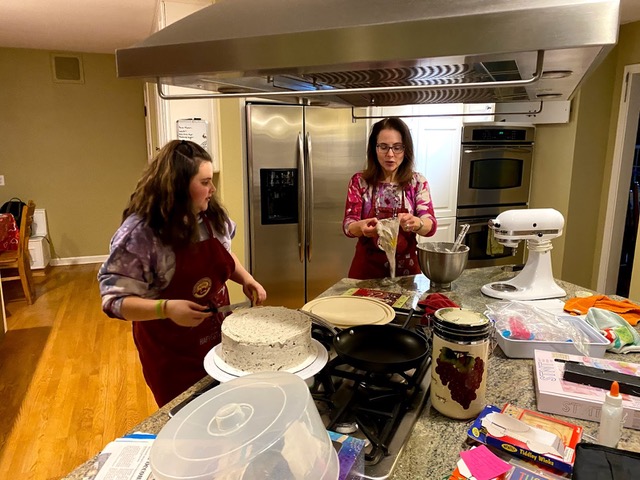
Karyn M. Frick, Ph.D., Professor
Director, Neuroendocrinology of Memory Lab
Department of Psychology, University of Wisconsin-Milwaukee
2441 E. Hartford Ave., Milwaukee, WI 53211
In early March when became apparent that my family of four would be quarantined for several weeks, I stocked up not only on toilet paper and disinfectants, but also on baking supplies. My teenage daughter and I love to bake. Baking started as a fun activity to keep us busy, teach the kids how to measure and combine ingredients, and eat the yummy results. As the kids got older, my son got more interested in the eating and my daughter in the baking. Like a good scientist, I like to follow protocols and have success closely following recipes. My daughter, however, is probably the better scientist in that she enjoys trying new things and experimenting. She also has far more artistic flair than me, so she is our resident cake and cupcake decorator. Because early 2020 was too busy for much baking, and the start of quarantine coincided with spring break for all of us, I knew that quarantine would result in lots of baking requiring lots of supplies. Boy, was I right!
In the past 6 weeks, we’ve made German chocolate cupcakes, chocolate malt cupcakes with chocolate ganache filling and vanilla frosting, an Easter bunny cake, spring-themed sugar cookies decorated with royal icing, lemon poppy muffins, lemon blueberry doughnuts with lemon glaze, cinnamon buns with cream cheese frosting, merengue cookies, peppermint patties, chocolate chip blondies, and chocolate brownies. All were made from scratch except the Easter bunny cake (cheated there and used boxed mix and canned frosting). Although fresh fruits often features prominently in our baking, we’re saving those for healthy eating while trips to the grocery store are limited. We find many recipes online and others I’ve collected from magazines (Food Network magazine is an excellent source) or the local paper. At this point, I’m definitely the sous chef, helping my daughter while she takes the lead, but it’s exciting to see what she comes up with and it’s always satisfying to eat the results. Speaking of eating, how are we baking this much and not gaining 500 lbs? Strategic exercise—an hour or so 5-6 days/week plus dog walking—which is good for our waistlines and good for our brains!
Back to Top
Trends in Neuroscience – B. Bardsley (See Hobby Much)
In rating accent correctness in recordings of their own speaking, bias was revealed even through gender-distortion for 24 female students at the Ludwig-Maximilian University (LMU) of Munich. Interested in how second language learners perceive their own accent in relation to other language learners, LMU compiled 60 English sentences with phenomes native German speakers typically struggle to pronounce. After recording 24 female students producing each sentence twice in random order across samples, they were altered to sound like typical male voices. The participants were then asked to rate on a scale from 1 to 6 (1 being good and 6 being bad) how well the sentences are pronounced. Participants consistently rated their own accents as more correct than other second language learners (p<.001) The paper further discusses that this effect may be evidence for more third-party instruction for language-learners.
Mitterer et al. (2020) My English sounds better than yours: Second-language learners perceive their own accent as better than that of their peers. Scientific Reports. DOI: https://doi.org/10.1371/journal.pone.0227643
Back to Top
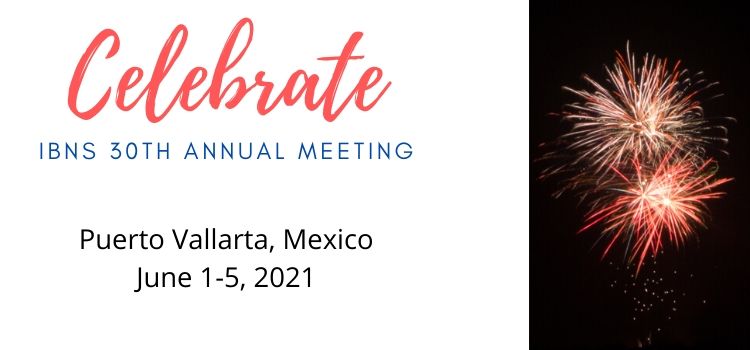
Calling all Potential Guest Editors!
The IBNS Newsletter is searching for volunteers to serve as guest editors during 2020. This is a wonderful chance to make friends and influence your colleagues, so do not let this opportunity pass you by! If you are interested, please contact the IBNS Central Office ([email protected]) or the Editor-in-Chief, Don McEachron ([email protected]). Please help to support the IBNS community of scholars by serving as the guest editor for a newsletter in 2020.
Back to Top
|